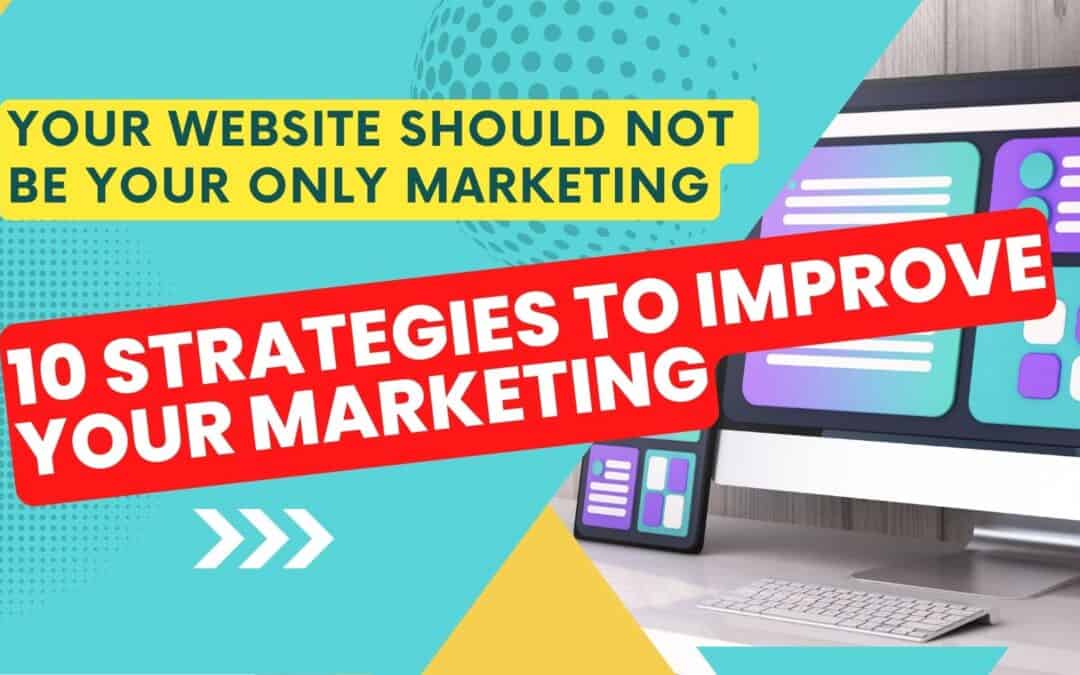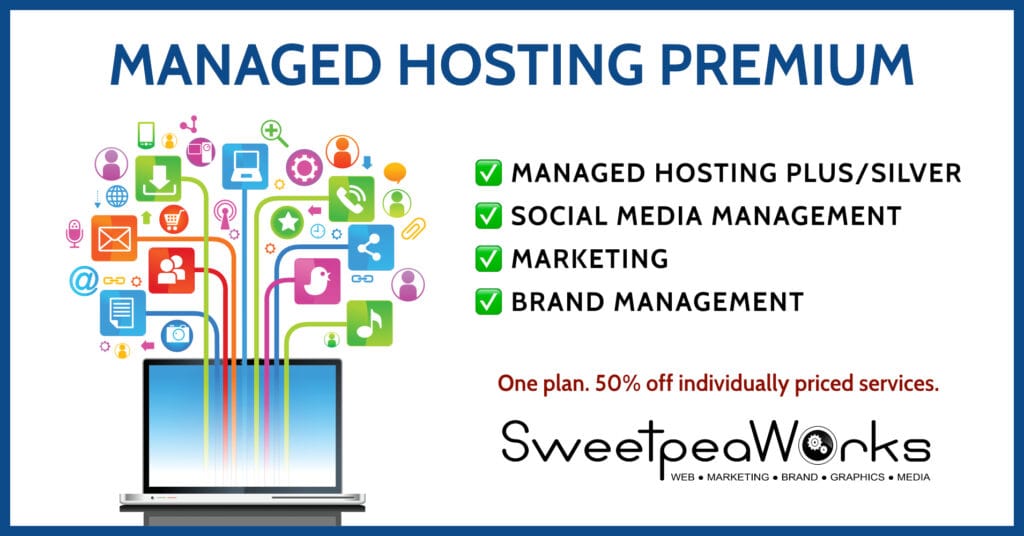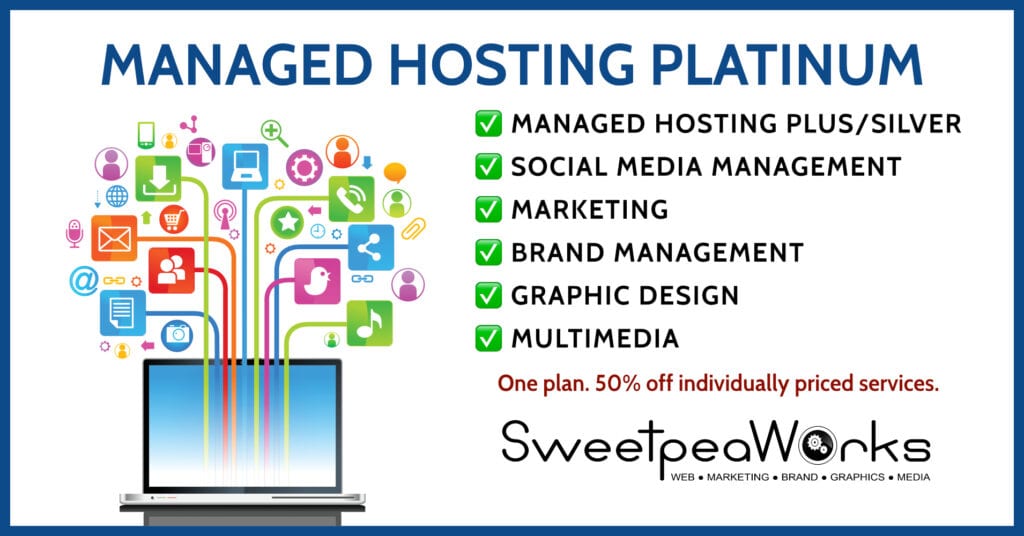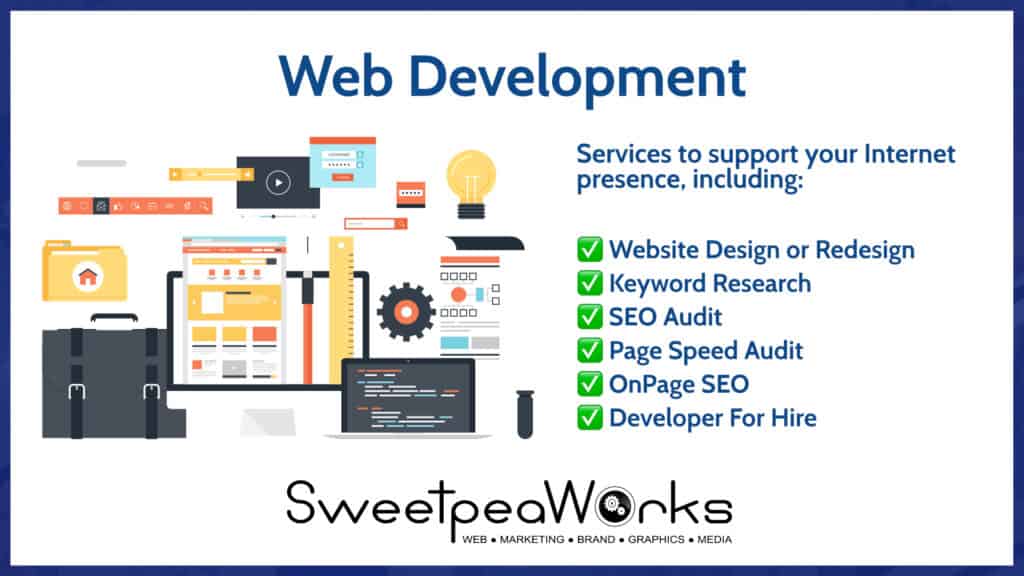You paid good money for a website, and you see your site come up in the first two pages of google searches, but that’s not translating to business. What should you do?
Aside from having a good website, there are several other effective methods you can utilize to get more business for your company and other services. Here are some strategies to consider:
- Local SEO Optimization: Ensure that your website is optimized for local search by including relevant keywords, updating your Google My Business listing, and obtaining positive customer reviews. This will help your business appear in local search results, making it easier for potential clients to find you.
- Social Media Marketing: Create and maintain active profiles on popular social media platforms like Facebook, Instagram, LinkedIn, and Twitter. Share high-quality photos of your completed projects, provide helpful tips, engage with your audience, and run targeted advertising campaigns to reach potential customers.
- Networking and Partnerships: Attend local business events, trade shows, and networking gatherings to connect with potential clients and partners in related industries. Building relationships with contractors, real estate agents, property managers, and other relevant professionals can lead to referrals and new opportunities.
- Online Reviews and Testimonials: Encourage satisfied customers to leave positive reviews and testimonials on your website, social media, and relevant review platforms (e.g., Yelp, Google Reviews). Positive reviews can significantly influence potential customers’ decisions.
- Email Marketing: Maintain an email list of past customers and potential leads. Use email marketing to keep them informed about new services, special offers, and industry insights. Be sure to provide valuable content rather than just promoting your services.
- Local Advertising: Consider traditional advertising methods, such as local newspapers, radio, and billboards. Target your advertising efforts to the specific geographic areas where your services are offered.
- Community Involvement: Participate in community events, sponsor local sports teams or charitable initiatives, and engage in community service. This involvement helps build trust and visibility in the local area.
- Referral Program: Implement a referral program that rewards existing customers for referring new clients to your business. Word-of-mouth referrals are powerful and can generate a steady stream of leads.
- Online Video Content: Create informative and engaging video content showcasing your roofing projects, facility maintenance expertise, and other services. Video content has become increasingly popular and can help you connect with potential customers in a more personal way.
- Google Ads and PPC Campaigns: Invest in pay-per-click (PPC) advertising, such as Google Ads, to target specific keywords and demographics relevant to your services. PPC campaigns can be an effective way to drive targeted traffic to your website.
Remember, consistency is key in marketing. Combining these strategies and staying dedicated to your marketing efforts will increase your chances of attracting more business for your roofing company and other services.

Local SEO Optimization
Local SEO (Search Engine Optimization) is the process of optimizing your online presence to improve your visibility in local search results. This is particularly important for businesses that serve a specific geographic area, such as a roofing company offering services in a particular city or region. Local SEO aims to make it easier for potential customers in your area to find your business when they search for relevant services online. Here are some key elements of local SEO optimization:
- Google My Business (GMB) Listing: Claim and verify your Google My Business listing. Ensure that all the information provided, such as business name, address, phone number, website, and business hours, is accurate and up-to-date. Choose the most relevant categories for your services, and include high-quality photos of your work.
- Local Keywords: Identify and incorporate local keywords relevant to your services and target area. For example, use keywords like “roofing contractor [city],” “facility maintenance [city],” or “commercial build-out services [city].” Use these keywords naturally in your website content, meta tags, and page titles.
- On-Page SEO: Optimize your website’s on-page elements for local search. This includes using location-specific information in title tags, meta descriptions, and header tags. Create location-based landing pages for different service areas if your company serves multiple locations.
- NAP Consistency: NAP stands for Name, Address, and Phone Number. Ensure that your NAP information is consistent across your website, Google My Business, local directories, and other online platforms. Consistency helps search engines associate your business with a specific location.
- Local Citations and Directory Listings: Submit your business information to reputable local directories and industry-specific platforms. This creates additional online mentions (citations) of your business, which can boost your local search visibility. Ensure that your business information is consistent across all directories.
- Customer Reviews and Ratings: Encourage customers to leave reviews on your Google My Business listing and other review platforms. And showcase them on your website. Positive reviews not only influence potential customers but also contribute to your local search ranking.
- Local Content and Blogging: Create content that is relevant to your local audience. This could include blog posts about local projects, community events, industry news, and tips related to roofing, facility maintenance, flooring, and remodeling in your area.
- Mobile Optimization: Ensure that your website is mobile-friendly. With the increasing use of mobile devices for local searches, having a responsive website is crucial for a positive user experience and higher search rankings.
- Local Link Building: Seek opportunities to earn backlinks from local businesses, organizations, and industry partners. Local backlinks can boost your authority in local search results.
- Social Signals: Engage with your local audience on social media platforms. Social signals, such as likes, shares, and comments, can indirectly impact your local search ranking.
Remember that local SEO is an ongoing process, and it may take time to see significant results. Stay consistent with your efforts, monitor your local search performance, and adapt your strategies as needed to improve your online visibility and attract more local customers.

Social Media Marketing
Social Media Marketing (SMM) is a digital marketing strategy that involves using social media platforms to promote your business, build brand awareness, engage with your target audience, and drive traffic to your website. It has become an essential component of the overall marketing mix for businesses of all sizes, including your business. Here’s an expanded overview of Social Media Marketing:
- Platform Selection: Start by identifying the social media platforms most relevant to your target audience. While Facebook is generally a safe bet for most businesses due to its broad user base, platforms like Instagram, LinkedIn, Twitter, and Pinterest might be more suitable depending on your specific services and target demographics.
- Complete and Optimize Profiles: Create business accounts on the selected platforms, and ensure that your profiles are complete and optimized. Use your business name, logo, and other branding elements consistently across all platforms.
- Content Strategy: Develop a content strategy that aligns with your business goals and appeals to your target audience. Mix promotional content with valuable, informative, and engaging content related to roofing, flooring, remodeling, and other services you offer. Content types may include photos, videos, blog posts, infographics, and more.
- Visual Appeal: Social media is a visual medium, so focus on high-quality visuals that showcase your work, projects, and services. Eye-catching images and videos are more likely to capture the attention of users scrolling through their feeds.
- Consistency: Be consistent in posting content. Create a content calendar to plan your posts ahead of time, and maintain a consistent posting schedule. This helps keep your audience engaged and informed.
- Engagement and Interaction: Social media is not a one-way communication channel. Respond to comments, messages, and mentions promptly. Engage with your audience by asking questions, running polls, and encouraging discussions.
- Paid Advertising: Most social media platforms offer advertising options that allow you to target specific demographics, interests, and locations. Consider using paid advertising to reach a wider audience and promote your services to potential customers.
- Influencer Marketing: Collaborate with influencers or industry experts who have a significant following in your niche. Their endorsement can help increase your brand’s reach and credibility.
- Social Media Contests and Giveaways: Run contests and giveaways to encourage user participation and increase brand awareness. For example, you could offer a free inspection or a discount on roofing services to participants.
- Analytics and Insights: Use analytics tools provided by the social media platforms to track the performance of your posts and campaigns. Analyzing data will help you understand what content resonates best with your audience and allows you to make data-driven decisions.
- Monitor and Manage Reviews: Keep an eye on reviews and feedback about your services on social media. Address both positive and negative feedback professionally and promptly.
- Cross-Promotion: Cross-promote your social media accounts across different platforms and your website. Add social media buttons or widgets to your website to encourage visitors to follow your profiles.
Remember that social media marketing is about building relationships and trust with your audience. Focus on providing value, being authentic, and engaging with your followers to establish a strong online presence and attract more customers to your roofing company and other services.

Networking and Partnerships
Networking and partnerships are powerful strategies that can help your company gain exposure, credibility, and access to new business opportunities. Building relationships with other professionals, businesses, and organizations in related industries can lead to referrals, collaborations, and mutual growth. Here’s an expanded overview of networking and partnerships:
- Identify Target Partners: Begin by identifying potential partners who complement your services. If your industry was roofing, these could include general contractors, architects, interior designers, real estate agents, property managers, suppliers, and other tradespeople. Look for businesses that often work with your target clientele or share similar values.
- Attend Industry Events and Networking Gatherings: Regularly participate in local and industry-specific events, trade shows, seminars, and networking gatherings. These events provide opportunities to meet potential partners face-to-face and establish meaningful connections.
- Join Business Associations and Chambers of Commerce: Become a member of local business associations and chambers of commerce. These organizations offer networking events, workshops, and opportunities to interact with other business owners and professionals in your area.
- Online Networking: Leverage online platforms like LinkedIn to connect with professionals in related industries. Join industry-specific groups and engage in discussions to showcase your expertise and build relationships.
- Offer Value First: When reaching out to potential partners, focus on offering value first. Consider ways you can help them or their clients before seeking anything in return. This approach builds goodwill and increases the likelihood of reciprocation in the future.
- Collaborative Projects: Explore opportunities for collaborative projects with partners. For example, you could team up with an interior designer to offer a combined roofing and remodeling package for clients. Collaborative efforts can enhance the overall value proposition and attract more customers.
- Referral Agreements: Establish formal referral agreements with your partners. This means that when they come across clients needing roofing or related services, they refer them to your company, and vice versa. Ensure these agreements are based on mutual trust and understanding.
- Joint Marketing Efforts: Consider joint marketing efforts with your partners. This could involve co-hosting webinars, creating joint content, or featuring each other on your respective websites and social media platforms. These activities expand your reach to each other’s audiences.
- Sponsorship and Event Participation: Sponsor local events or community initiatives where your partners are involved. Participating in joint sponsorships helps reinforce your partnership and demonstrates your commitment to the community.
- Measure and Nurture Relationships: Keep track of your networking efforts and partnerships. Maintain communication with your partners regularly to nurture the relationships. Celebrate successes together and address any challenges that arise.
- Be Reliable and Professional: Reputation matters in networking and partnerships. Always deliver on your promises, be reliable, and maintain a high level of professionalism in your interactions.
Remember that networking and partnerships are about building genuine, long-term relationships. It’s not just about seeking immediate business gains, but about fostering trust and collaboration to create a network of support and growth for your roofing company and other services.

Online Reviews and Testimonials
Online reviews and testimonials are essential components of your online reputation. They can significantly influence potential customers’ decision-making process, as people often rely on the experiences of others to gauge the reliability and quality of a roofing company or service provider. Here’s an expanded overview of online reviews and testimonials:
- Review Platforms: Encourage your satisfied customers to leave reviews on popular review platforms such as Google My Business, Yelp, Angie’s List, Trustpilot, and Better Business Bureau (BBB). Each platform has its own unique audience, so having reviews on multiple platforms can widen your reach.
- Testimonials on Your Website: Create a dedicated page on your website to showcase testimonials from happy clients. Use authentic quotes, photos, and videos (if possible) to add credibility to the testimonials. Make sure to get permission from customers before featuring their testimonials on your website.
- Request Feedback: After completing a project, reach out to your clients and ask them for feedback on their experience with your roofing company. Be proactive in seeking both positive and constructive feedback, as it can help you improve your services.
- Make Leaving Reviews Easy: Provide clear instructions and links on your website, emails, or social media posts on how customers can leave reviews on different platforms. The easier it is for them to leave a review, the more likely they’ll do it.
- Respond to Reviews: Monitor your online reviews regularly and respond to each one, whether positive or negative. Thank customers for their kind words and address any issues raised in negative reviews professionally and constructively. Showing that you care about your customers’ feedback demonstrates your commitment to quality service.
- Incentives for Reviews: While you can’t directly offer incentives for positive reviews, you can encourage honest feedback by entering customers into a raffle or offering a small discount on future services for leaving a review.
- Share Reviews on Social Media: Share positive reviews and testimonials on your social media platforms. This not only promotes your reputation but also encourages more customers to leave reviews.
- Video Testimonials: Video testimonials have a powerful impact. Consider asking satisfied customers if they would be willing to provide a video testimonial about their experience with your roofing company. These videos can be shared on your website and social media for greater impact.
- Case Studies: Alongside testimonials, consider creating detailed case studies showcasing successful projects. Include before-and-after photos, descriptions of the work done, and the client’s feedback. Case studies demonstrate your expertise and problem-solving abilities.
- Monitor and Analyze: Regularly monitor your online reviews and testimonials to stay informed about customer sentiment. Use feedback to identify areas for improvement and leverage positive reviews in your marketing efforts.
- Address Negative Reviews Privately: If you receive a negative review, reach out to the customer privately to address their concerns. Attempt to resolve the issue and, if appropriate, ask if they would consider updating their review after the resolution.
Remember, online reviews and testimonials are a reflection of your roofing company’s reputation. Providing excellent service and going the extra mile for your customers will naturally lead to more positive reviews and, in turn, attract new business opportunities.

Email Marketing
Email marketing is a powerful digital marketing strategy that involves sending targeted emails to a group of individuals or potential customers to promote your company and its services. It allows you to communicate directly with your audience, build relationships, and drive engagement. Here’s an expanded overview of email marketing:
- Build an Email List: Start by building a quality email list of past customers, potential clients, and interested prospects. You can collect email addresses through your website’s opt-in forms, landing pages, in-store sign-ups, or through lead magnets like free guides or resources related to roofing and home improvement.
- Segmentation: Divide your email list into different segments based on specific criteria such as location, past purchases, or interests. Segmenting allows you to send targeted and relevant content to each group, increasing the chances of engagement.
- Personalization: Personalize your emails by addressing subscribers by their names and tailoring content to their preferences. Personalized emails tend to have higher open rates and make recipients feel more valued.
- Email Content: Create valuable and engaging content for your email campaigns. This could include showcasing completed roofing projects, sharing helpful tips for home maintenance, announcing special promotions, or featuring customer testimonials.
- Automated Email Campaigns: Utilize automation to send automated email campaigns triggered by specific actions or events. For instance, you can set up welcome emails for new subscribers or follow-up emails after a customer has made a purchase.
- Clear Call-to-Action (CTA): Include clear and compelling calls-to-action in your emails, directing recipients to take specific actions such as requesting a free roofing estimate, scheduling a consultation, or visiting your website for more information.
- Mobile Responsiveness: Ensure that your emails are mobile-friendly, as many people check their emails on smartphones and tablets. A responsive design will improve the user experience and increase the likelihood of engagement.
- A/B Testing: Experiment with A/B testing to optimize your email campaigns. Test different subject lines, email content, CTAs, and send times to identify what resonates best with your audience.
- Frequency and Consistency: Find the right balance for your email frequency. Sending too many emails can lead to unsubscribes, while sending too few may cause your audience to forget about your business. Stay consistent with your email schedule.
- Compliance and Privacy: Ensure that your email marketing practices comply with relevant laws and regulations, such as the CAN-SPAM Act (for the United States) or the General Data Protection Regulation (GDPR) (for the European Union). Respect subscribers’ privacy and offer clear options for unsubscribing.
- Monitor and Analyze: Track the performance of your email campaigns using email marketing tools’ analytics. Monitor metrics like open rates, click-through rates, and conversions. Use this data to refine your email marketing strategy over time.
- Integration with Other Channels: Integrate email marketing with other marketing channels, such as social media and your website, to provide a seamless experience for your audience and reinforce your brand message.
Remember, email marketing is not just about promoting your services; it’s about building relationships and providing value to your subscribers. By delivering relevant and engaging content, you can strengthen customer loyalty and attract new business opportunities for your roofing company.

Local Advertising
Local advertising involves promoting your roofing company and services to a targeted audience within a specific geographic area. It’s designed to reach potential customers in your local community and generate leads from nearby residents and businesses. Here’s an expanded overview of local advertising strategies:
- Print Advertising: Consider print ads in local newspapers, community magazines, TopPrz, Valpac, and relevant trade publications. This traditional form of advertising can help you reach a local audience who still engage with printed media.
- Display Advertising: Use billboards, banners, and posters strategically placed in high-traffic areas to create brand visibility and awareness. Display advertising is especially effective for local businesses targeting motorists and pedestrians.
- Local Radio and TV: If your budget permits, advertise on local radio stations or cable TV channels. These mediums can help you reach a broader audience within your service area.
- Every Door Direct Mail Campaigns: EDDM send targeted direct mail, such as postcards or flyers, to residents and businesses within your service area. Direct mail can be personalized, making it more relevant to recipients.
- Local Online Advertising: Utilize online advertising platforms like Google Ads and social media advertising to target specific geographical areas. You can use geo-targeting to show your ads to people within a certain radius of your business location or in selected zip codes.
- Local Events Sponsorship: Sponsor or participate in local community events, fairs, or charity initiatives. This can help increase brand visibility and demonstrate your commitment to the local community.
- Local Partnerships: Partner with other local businesses to cross-promote each other’s services. For example, a partnership with a home improvement store can lead to referrals for roofing and remodeling projects.
- Community Boards and Flyers: Display flyers and business cards on community bulletin boards, libraries, and other public places. Make sure to include essential contact information and a clear message.
- Local Online Directories: List your business in online directories that focus on local businesses and services. This can improve your local search visibility and make it easier for potential customers to find you.
- Public Relations (PR): Engage in local Public Relations efforts by submitting press releases or articles to local media outlets. Highlight your company’s achievements, community involvement, and unique services to attract positive attention.
- Local Search Engine Optimization (SEO): As mentioned earlier, optimize your website for local search to improve your organic visibility in local search results. This includes using location-specific keywords and local business directories.
- Word-of-Mouth Marketing: Encourage word-of-mouth marketing by providing exceptional service and offering referral incentives to your satisfied customers. Happy customers can become your brand ambassadors, bringing in more local business.
When implementing local advertising strategies, it’s crucial to have a clear understanding of your target audience and the local market. Focus on showcasing your company’s strengths and unique selling points to differentiate yourself from competitors. Consistency in your messaging across different advertising channels will reinforce your brand presence in the local community and contribute to your business’s success.

Community Involvement
Community involvement is the active engagement of your company in local activities, events, and initiatives to contribute positively to the community where you operate. By participating in community-focused efforts, your business can build trust, establish a positive reputation, and foster meaningful relationships with local residents and organizations. Here’s a summary of community involvement:
- Local Engagement: Get involved in local events, fairs, charity drives, and community gatherings. Participate as a sponsor, volunteer, or contributor to show support and give back to the community.
- Sponsorship and Donations: Consider sponsoring local sports teams, cultural events, or charity fundraisers. Donating products, services, or funds to local causes demonstrates your commitment to the community’s well-being.
- Partnerships with Nonprofits: Collaborate with local nonprofits and charitable organizations to address community needs. Offer your expertise, services, or resources to support their initiatives.
- Educational Outreach: Engage with local schools and educational institutions. Offer workshops, career talks, or sponsor educational programs related to construction, roofing, or building maintenance.
- Environmentally Friendly Initiatives: Demonstrate your commitment to sustainability and environmental responsibility by participating in or organizing eco-friendly initiatives, such as tree planting events or recycling drives.
- Local Employment Opportunities: Prioritize hiring local talent and promoting job opportunities within the community. This fosters economic growth and strengthens your business’s connection with residents.
- Open Houses and Tours: Host open houses or offer tours of your roofing company’s facilities to showcase your operations and introduce yourself to community members.
- Community Outreach Programs: Develop outreach programs that cater to the needs of the local community, such as offering free roof inspections for low-income homeowners or providing assistance after natural disasters.
- Civic Engagement: Be active in local business associations, chambers of commerce, and community forums. Attend town hall meetings to stay informed about local issues and contribute constructively to discussions.
- Online Engagement: Extend your community involvement online through social media. Share updates about your community activities and encourage dialogue with your audience.
- Volunteer Initiatives: Encourage your team members to volunteer their time and skills for local charitable causes. Organize company-wide volunteer days to give back together.
- Listening and Responding: Listen to the needs and concerns of the local community. Address any issues that arise promptly and professionally.
Community involvement is not only a way to give back to the community but also an opportunity to strengthen your roofing company’s reputation, build brand loyalty, and attract customers who appreciate businesses that actively support the places they operate in. Remember, genuine and consistent efforts in community involvement can leave a lasting positive impact on your business and the community you serve.

Referral Program
A referral program is a structured and incentivized approach to encourage your satisfied customers to refer new clients to your roofing company and its services. A well-designed referral program can generate word-of-mouth marketing, attract new business opportunities, and reward loyal customers for their advocacy. Here’s an outline to create an effective referral program:
- Define Program Goals: Determine the objectives of your referral program. Are you aiming to increase customer acquisition, reward loyal customers, or promote specific services? Clearly outline your program’s goals to guide its implementation.
- Incentives: Decide on the incentives you will offer to both the referring customer and the new customer. Incentives could include discounts on services, cash rewards, gift cards, or free additional services. Make the rewards enticing enough to motivate referrals.
- Program Terms and Conditions: Establish clear terms and conditions for your referral program. Include eligibility criteria, rules for earning and redeeming rewards, and any restrictions on the referral process.
- Promotional Materials: Create marketing materials to promote your referral program. These can include flyers, social media graphics, and email templates. Ensure that the program’s benefits and requirements are communicated clearly.
- Program Landing Page: Design a dedicated landing page on your website to provide details about the referral program and a referral form for customers to use.
- Tracking and Attribution: Implement a system to track referrals and attribute them to the referring customers. This could be through unique referral codes, online forms, or other tracking mechanisms.
- Email Campaign: Send an email announcement to your existing customer base to introduce the referral program. Explain the benefits of participating and provide instructions on how to refer others.
- Social Media Promotion: Use your social media channels to promote the referral program. Share success stories of customers who have benefited from the program and encourage others to participate.
- Monitor and Reward: Regularly monitor referrals and reward customers who successfully refer new clients. Be prompt in delivering rewards to maintain customer satisfaction.
- Follow-Up and Thank You: After receiving a referral, follow up with the new customer promptly. Thank them for choosing your roofing company and acknowledge the referring customer for their recommendation.
- Track Program Performance: Measure the success of your referral program by tracking the number of referrals, conversion rates, and the overall impact on your business. Use this data to assess the program’s effectiveness and make any necessary adjustments.
- Continuous Promotion: Keep the referral program running consistently. Consider periodic promotions or special events to re-energize customer participation.
Remember, a successful referral program relies on providing exceptional service to your customers. Delight your clients with top-notch roofing services and customer care, so they feel motivated to refer others. By rewarding their loyalty and advocacy, you’ll create a mutually beneficial relationship that contributes to the growth and success of your roofing company.

Online Video Marketing
Utilizing YouTube for marketing can be an incredibly valuable strategy for your company. As a visual platform with over two billion monthly active users, YouTube provides an ideal space to showcase our roofing projects, facility maintenance expertise, and other services. Sweetpea Works can create engaging video content that highlights the quality of our work, offers helpful tips and tutorials, and demonstrates our commitment to customer satisfaction. Through YouTube, we can build a loyal audience, establish ourselves as industry experts, and reach potential clients looking for roofing solutions. Moreover, we can integrate YouTube videos into your website and social media channels, expanding your online presence and increasing your chances of attracting more business opportunities. By consistently providing valuable content and fostering a sense of community, you can leverage YouTube to drive brand awareness, boost customer engagement, and ultimately grow our roofing business.
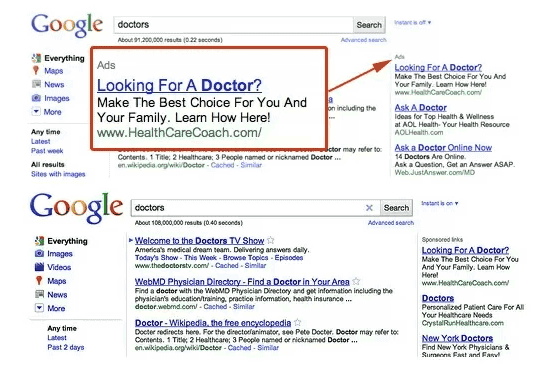
Google Ads and PPC campaigns
Google Ads is an online advertising platform developed by Google that allows businesses to create and display ads on Google’s search engine results pages (SERPs), websites, and other platforms within the Google Network. PPC stands for Pay-Per-Click, which is a type of advertising model where advertisers pay a fee each time someone clicks on their ad.
Here’s an explanation of Google Ads and PPC campaigns:
- Google Ads Platform: Google Ads offers a user-friendly interface where advertisers can create, manage, and optimize their ad campaigns. It provides various ad formats, targeting options, and budget controls to suit different marketing objectives.
- Ad Formats: Google Ads supports several ad formats, including:
- Search Ads: Text-based ads that appear on Google’s search results when users search for specific keywords or phrases.
- Display Ads: Visual banner ads that are displayed on websites and apps within the Google Display Network, which includes millions of partner sites.
- Video Ads: Ads that appear before, during, or after YouTube videos or on other video partner sites.
- Shopping Ads: Product listings that appear on Google’s Shopping tab when users search for products to buy.
- App Campaigns: Ads to promote mobile apps across various Google platforms and partner sites.
- Keywords and Targeting: Advertisers select relevant keywords or phrases related to their products or services. When users search for these keywords on Google, the ads may appear. Additionally, advertisers can use various targeting options, such as location, language, device, demographics, and interests, to reach their desired audience.
- Budget Control: With PPC campaigns, advertisers set a budget they are willing to spend on their ads. They only pay when someone clicks on their ad, which means they’re charged based on the number of clicks received.
- Bidding System: When multiple advertisers target the same keywords or audience, Google uses a bidding system to determine which ads get displayed. The bid amount and ad relevance play a role in this process.
- Ad Rank: Google uses an Ad Rank formula to determine the order in which ads appear on the search results page or other Google platforms. Ad Rank is influenced by factors such as bid amount, ad quality, landing page experience, and expected click-through rate (CTR).
- PPC Campaign Management: Successful PPC campaigns require ongoing management and optimization. Advertisers need to regularly monitor the performance of their ads, adjust bids, update keywords, and refine ad content to achieve the best results.
- Tracking and Analytics: Google Ads provides detailed performance data and analytics, allowing advertisers to measure the effectiveness of their campaigns, identify areas for improvement, and make data-driven decisions.
Google Ads and PPC campaigns are highly effective in driving targeted traffic to a website and increasing brand visibility. They provide businesses, including roofing companies, with the flexibility to reach their audience precisely when they are actively searching for relevant products or services. By optimizing their campaigns and targeting the right keywords and audience, businesses can maximize their return on investment (ROI) and achieve their marketing goals.
How can Sweetpea Works help?
As a company offering different products or services, there are numerous effective methods to boost business growth and attract new clients. A well-designed website serves as a strong foundation, showcasing your expertise and services to potential customers. However, you can and should further amplify your online presence through local SEO optimization, social media marketing, and email marketing. By engaging in networking, partnerships, and community involvement, you can establish strong connections with other businesses and our local community, fostering trust and loyalty. Implementing a referral program can leverage the power of satisfied customers, turning them into brand advocates who bring in new business opportunities. Moreover, exploring YouTube for marketing and considering Google Ads and PPC campaigns will expand your reach, drive traffic, and increase brand awareness in the digital space. Embracing this holistic approach to marketing and utilizing various strategies will undoubtedly propel your company to new heights, securing success and recognition in the competitive marketplace.
If you need more business communications, consider our All-In-One Digital Solutions. For one low monthly fee, this will be like having a Communications Department WITHOUT THE EXPENSE of having a full time employee (or employees) on your payroll. Check it our here.

